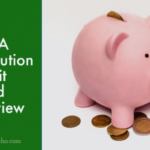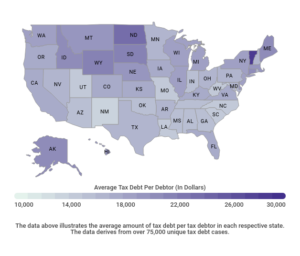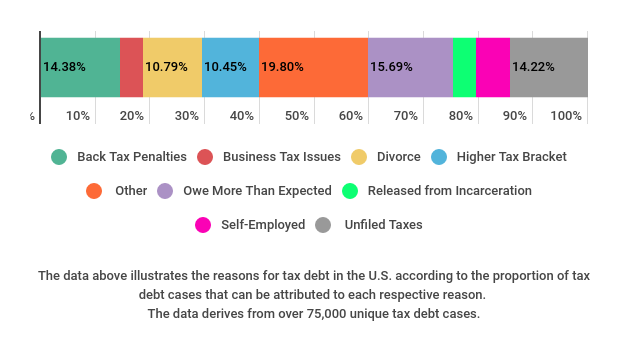 By Darren Coleman and Elena Hanson
By Darren Coleman and Elena Hanson
Special to the Financial Independence Hub
The following Q&A is between the Financial Independence Hub and the two hosts of the new Two-Way Traffic podcast, financial advisor Darren Coleman and cross-border tax expert Elena Hanson.
Their bios are at the end of this blog.
FINANCIAL INDEPENDENCE HUB:
While April 30th is usually Canada’s tax filing deadline, this has been extended this year because of the Covid-19 crisis. Our first question is whether there are other tax impacts for investors because of the Coronavirus?
DARREN COLEMAN: The stock market sell-off was broadly based and the decline indiscriminate as both good and bad quality investments dropped about the same amount. When this happens, investors should upgrade the quality of their portfolios by moving into better quality securities. In some cases, this may mean triggering a capital loss you can carry backwards to reduce capital gains paid in the past (up to three tax years) or “bank” those losses to offset future capital gains. It’s a good idea now to review your investment portfolio and financial plan with a qualified Certified Financial Planner and investment professional. Business owners should also be tracking their losses, if they have any, as a result of closures or reduced operations.
ELENA HANSON: Most types of returns and payments have been extended, but Internal Revenue Service (IRS) and Canada Revenue Agency (CRA) operations have been curtailed and are operating at minimum capacity. This inconveniences practitioners and taxpayers as we are in tax season and continue doing business.
Both the Canadian and US governments have also introduced new, large legislative packages to address the current economic reality, stabilize the economy, and prevent a recession. US provisions have been enacted in three phases and we await phase four. The Canadian government has been modifying its economic response plan daily and only a small portion has been enacted. This requires us to stay on top of the situation, communicate with our clients in a timely manner, and advise them on their inquiries.
Are there Tax strategies we should be putting in place in lieu of Coronavirus?
DARREN COLEMAN: First, you should harvest capital losses in investment portfolios. And second, consider moving from investments that earn interest – rates are at historic lows – to those that pay dividends. Not only will you generate a higher income, you will pay a lower rate of tax on dividends over interest.
ELENA HANSON: It depends. Are you a business owner, and if so, are you US-based or Canadian-based? Are you an employee or are you a Canadian resident or a Canadian resident who is also a US citizen? Right now, it’s about injecting cash into the hands of the business or individuals. The US CARES Act is robust and offers real economic stimulus in the form of large loans. A portion of this is forgivable with eligibility to carry losses back as far as 2013, and you can accelerate depreciation on certain capital assets, which in the past, did not have preferential treatment. The Act also provides non-taxable rebates to individuals and access to their pensions on a tax-deferred or loan basis.
On the other hand, Canadian benefits are all taxable, whether it’s the Canada Emergency Response Benefit (CERB), the 10% employment subsidy of the Temporary Wage Subsidy (TWS), or the 75% subsidy of the Canada Emergency Wage Subsidy (CEWS). This means individuals and employers who receive these benefits will be taxed on them next year. They will also be taxed on the US benefits on the Canadian return (if they are subject to Canadian taxation) but not on the US return.
As for other strategies, consider filing early if you expect a refund. With the significant loss in marketable securities, it may be a good time to make a gift, replace assets in trusts, do estate freezing or refreezing. In addition, it’s wise to carryback losses to prior years, and on the US side you can now carryback corporate losses for both 2019 and 2018 taxation years for up to five years back. But watch out for scammers and fraudsters during the rebate season.
What are the best short-term things we should be doing?
DARREN COLEMAN: The first priority of every financial plan is to have cash, or immediate access to cash, so you can fund up to three months of expenses. That primary rule is being tested right now for many individuals, professionals and businesses. If you don’t have sufficient cash, you may need to adjust your holdings to free some up.
ELENA HANSON: The immediate need of our clients is to assist them with any tax benefits available from the stimulus packages, especially if they were laid off or terminated. For businesses, owner-managers want to better understand how they can preserve cash to maintain their operations. They want to know which of the newly introduced laws are best suited for their business – Economic Injury Disaster Loan (EID) or Paycheck Protection Program Loan (PPP) on the US side, or which of the two wage subsidies on the Canadian side. We’ve also been dealing with some loss tax planning, including bad debt, related to business operations or individual marketable securities for individuals.
What are the best long-term things we should be doing?
DARREN COLEMAN: The global equity markets had a historic decline in February and March. This has impacted the investment and retirement portfolios of millions of investors. What does this mean for your financial plan? It’s time to review that. For some, it may mean you need to keep working longer. For others, it may be a rare opportunity to improve your portfolios by buying great long-term securities that are on sale.
ELENA HANSON: If you’re a business owner it’s a great time to review and optimize your business strategy, revisit your supply chain, and look at disaster-response measures. This will better prepare you for the next time you face a challenging economic environment. Also, we will likely end up living in a different reality after the pandemic, so start thinking now about how to ensure your business can be more competitive and innovative.
If you’re an individual who is seeing a large portion of your portfolio disappear, perhaps it’s time to have an honest conversation with your money manager, update your risk tolerance in your portfolio, and do estate planning. As people reflect more on their mortality, you should also schedule a meeting with your lawyer (once businesses are open) to draft or update your will. We all want to hope for the best, but need to plan for the worst and this experience proves it.
What is the overall impact of Covid-19 on the market and on your investments?
DARREN COLEMAN: Most diversified portfolios are down between 15-25% in 2020. This has likely concerned most investors and has certainly changed their financial plans. It has also tested the risk tolerance of many, especially after a ten-year bull market. Continue Reading…









